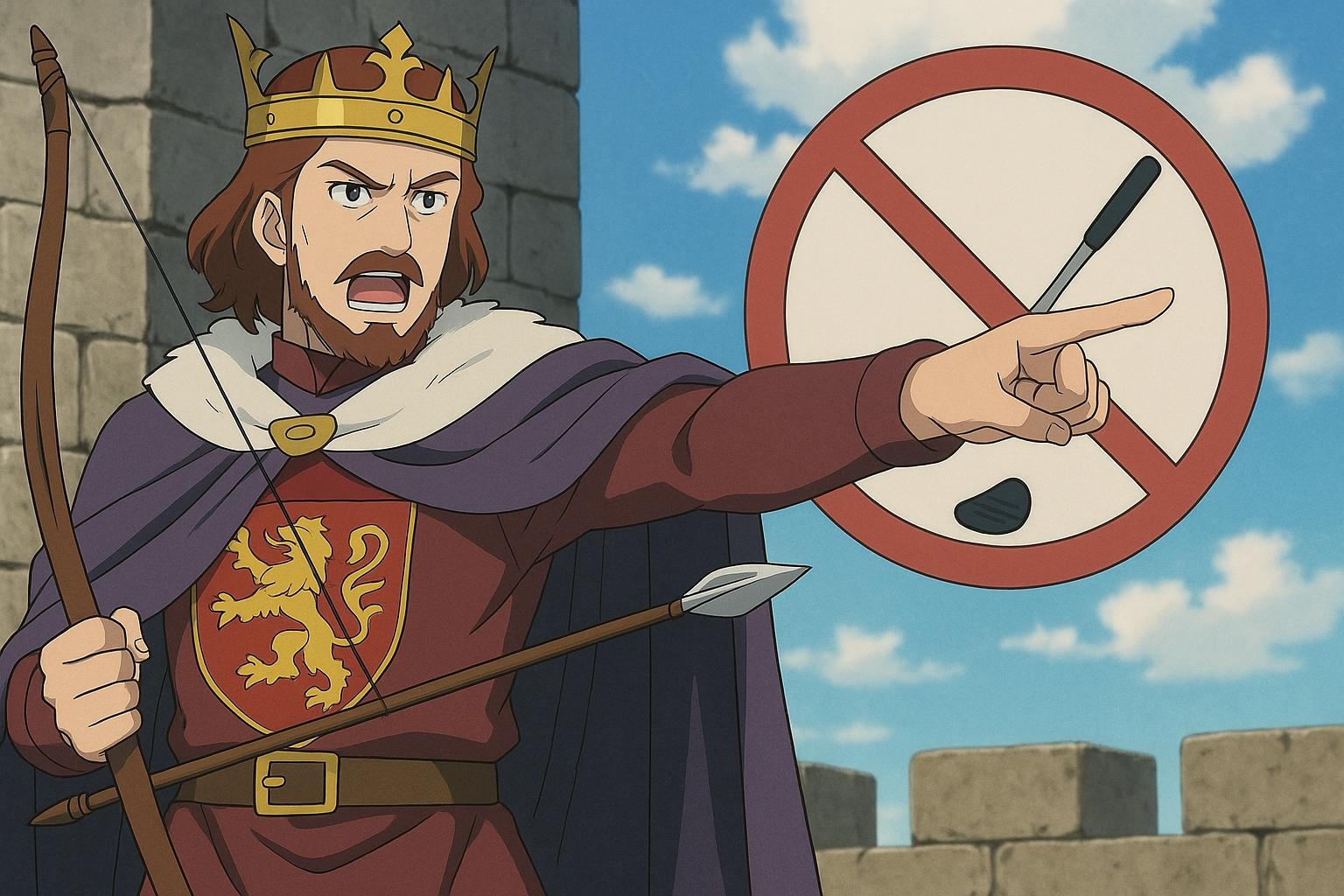In Scotland, the deep-rooted conflict between sport and military duty took a surprising turn in the 15th century when King James II intervened in the lives of his subjects by banning golf. With Scotland embroiled in almost constant warfare with England, the monarch was concerned that his fighting men were becoming too preoccupied with the game. Consequently, in 1457, he issued an edict aimed at redirecting their focus toward archery, a skill he deemed essential for national defence. This ban reflected a broader societal tension in which leisure pursuits were measured against their utility in times of conflict.
The king’s concerns were not unfounded. Emerging evidence suggests that golf had already begun to take root among the Scottish populace well before this edict. The exhibition "Bunker Shots: Stories of Golf and Conflict," currently on display in St Andrews—the storied home of golf—illuminates this complex history. Curator Kieran George notes that further references to the ban throughout the 15th century become entangled with the emergence of royal endorsements of the sport, including the eventual lifting of the ban by James IV in 1502, who himself became a golfer. This historical oscillation between prohibition and promotion underscores the cultural tug-of-war between martial obligation and recreational expression.
The exhibition not only delves into the origins of golf but also illuminates the sport's enduring ties to conflict throughout history. As the centuries progressed, golf became a means of recovery for wounded soldiers. Archival footage reveals veterans of World War I and World War II returning to the greens, their resilience evident as they continued to play despite physical limitations. One poignant story shared in the exhibition is that of a soldier who, wounded in Afghanistan, credits golf as a vital component in his rehabilitation, encapsulating the sport’s therapeutic qualities even amid strife.
Highlighting both amateur and professional golfers who sacrificed their careers for military service, the exhibition pays tribute to figures like Freddie Tait, a distinguished amateur golfer who was killed in the Boer War, and Ernest Whitcombe, who overcame serious injuries from shrapnel to claim multiple titles. Such narratives reveal a profound intersection of sacrifice and dedication, where love for the game often compelled individuals to serve their country even at great personal cost.
Women too challenged societal expectations during wartime, as evidenced by the contributions of Doris Chambers and Pam Barton. Chambers, a celebrated golfer, drove ambulances between field hospitals and the frontline, risking her life, while Barton served in the Women’s Auxiliary Air Force and tragically lost her life in 1943. Both women embody the spirit of resilience that characterizes golf’s ongoing dialogue with conflict.
The exhibition also captures the unconventional ways in which the game was played in dire circumstances. Captured personnel in prisoner of war camps used ingenuity to fashion golf balls from whatever materials were available, highlighting the game’s adaptability even when faced with adversity. The request for golf clubs to be sent to these camps further illustrates the lengths to which the sport has permeated human experiences, serving as a small beacon of hope amidst suffering.
As the exhibition marks the 80th anniversary of the end of World War II, it reflects on how wars disrupted the sport, leading to the cancellation of prestigious tournaments. Nevertheless, many players took it upon themselves to become ambassadors for charity, such as Henry Cotton, who raised significant funds for the Red Cross during World War II, showcasing how the golfing community responded to the challenges of their times.
With artifacts, film footage, and personal testimonies, "Bunker Shots: Stories of Golf and Conflict" runs until March next year and offers a compelling narrative that intertwines the history of golf with the relentless march of human conflict. As the sport continues to thrive in modern times, the connections drawn in this exhibition serve as a reminder of the game’s complex legacy—a reflection of human endurance amidst life's battles.
Reference Map:
- Paragraph 1 – [1], [6]
- Paragraph 2 – [1], [3], [5]
- Paragraph 3 – [2], [4]
- Paragraph 4 – [1], [5]
- Paragraph 5 – [1], [2]
- Paragraph 6 – [1], [4]
Source: Noah Wire Services
